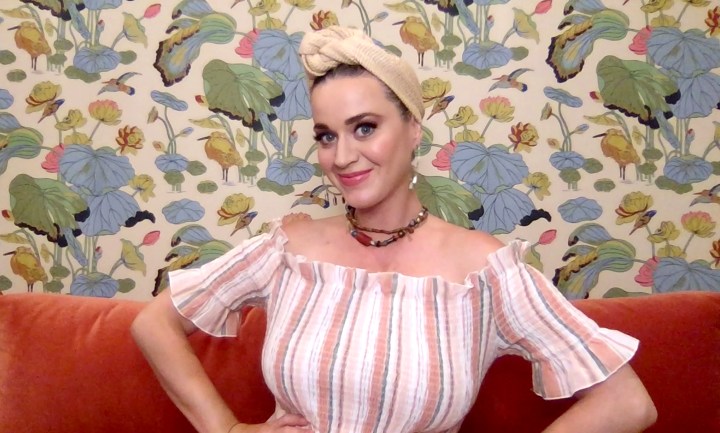
The business of Shein, the fast-fashion brand that’s dominating Gen Z’s closets
The business of Shein, the fast-fashion brand that’s dominating Gen Z’s closets

Like many of us, Janet Addai could use a bigger closet. Hers is overflowing so much that she’s hanging her sweatshirt collection on a wall in her room. The 22-year-old is a pharmacy student at Ohio State University, and when she’s not studying, she’s shopping.
“Every day,” she laughed. “I just like to dress up and take pictures.”
Addai posts her outfits on social media multiple times a week. And most of the time she’s wearing Shein. She gets a small kickback when followers use her discount code.
Shein has a cult following on YouTube, Instagram and TikTok, where young women post videos trying on their #sheinhaul.
Addai spends around $800 a month on Shein. She likes that the brand is constantly coming out with new clothes and that, most importantly, the clothes are cheap.
“To buy, let’s say, an outfit, $50 at H&M — I would rather use the $50 to buy, let’s say, four outfits from Shein,” she said.
There’s so much buzz around sustainable fashion: resale, upcycling, alternative materials and carbon footprint transparency. But fast fashion is still a huge part of the apparel industry, and Shein is upstaging the rest. The online-only fashion brand is based in China and sells mostly to young women in the United States, though it also sells clothes for men. It was recently valued at $100 billion. That’s more than what competitors Zara and H&M are worth combined, or as much as Elon Musk’s SpaceX.
So what is so special about this particular brand? Its hallmarks — affordability, trendiness and speed — have always been what defines fast fashion.
“But Shein, I mean, they’re the next wave. It’s ultra fast fashion,” said Elizabeth Cline, author of “Overdressed: The Shockingly High Cost of Cheap Fashion.”
While Zara may drop new clothes weekly, Shein drops new stuff every day. You can search new arrivals by date. And the variety is incredible. Right now, its website has more than 5,000 different dresses.
The company has faced multiple lawsuits from other brands accusing it of copying their designs. But Cline said it’s not the clothing that makes Shein unique. It’s the business model.
“I think Shein is positioning itself as a technology platform,” she said.
Jiajia Zou, a partner at Sequoia Capital China, which has been investing in Shein since 2018, agreed.
“From our view, they are a technology company,” she said.
Zou won’t talk specifically about the brand’s technology, and Shein declined to be interviewed for this story. But Zou said Shein has built a digital system that gives designers, suppliers and factories immediate data that’s helped the brand go beyond just-in-time manufacturing to real-time manufacturing.
“When you need 1 meter of cloth, in a perfect world you should only manufacture 1 meter of cloth,” she said.
Shein does not waste textiles or time. It makes small batches of everything, practically made to order. This saves a lot of money and trains the customer not to be disappointed when things sell out because they know more styles are on the way.
“You know, if something is out of stock that’s fine,” said Sheng Lu, a professor of apparel studies at the University of Delaware. “And for other retailers, that’s a big problem because, you know, I only have so many different styles.”
Shein is also able to churn out clothes quickly and cheaply because most of its supply chain, from button production to assembly line, is in China. Also, it doesn’t have retail stores or regional warehouses. This means it ships each order directly to the customer. Lu said most orders under $800 enter the U.S. tax-free.
“Which means companies don’t have to pay tariffs, and this also can mean a lower price for consumers,” he said.
This whole business model creates a cycle that leaves customers wanting more.
“By having thousands and thousands of options, it does kind of just lend itself to kind of endless scrolling and this idea that there is going to be something out there. Eventually you will find something,” said Scott Rick, a professor of marketing at the University of Michigan.
Maybe this sounds familiar, like the very social media platforms Shein has built its business on, where influencers flaunt perfection in a new pair of pumps.
“That kind of fantasizing is a real source of pleasure,” he said. “It’s a way to kind of daydream a bit.”
Daydream or distract yourself. For some people, sifting through 40 pages of bikinis sounds like a nightmare. For Addai, it’s calming.
“Sometimes when I’m not feeling too good, I just go to Shein if I’m feeling bored. I just browse, just to feel good,” she said.
There’s a lot happening in the world. Through it all, Marketplace is here for you.
You rely on Marketplace to break down the world’s events and tell you how it affects you in a fact-based, approachable way. We rely on your financial support to keep making that possible.
Your donation today powers the independent journalism that you rely on. For just $5/month, you can help sustain Marketplace so we can keep reporting on the things that matter to you.

















